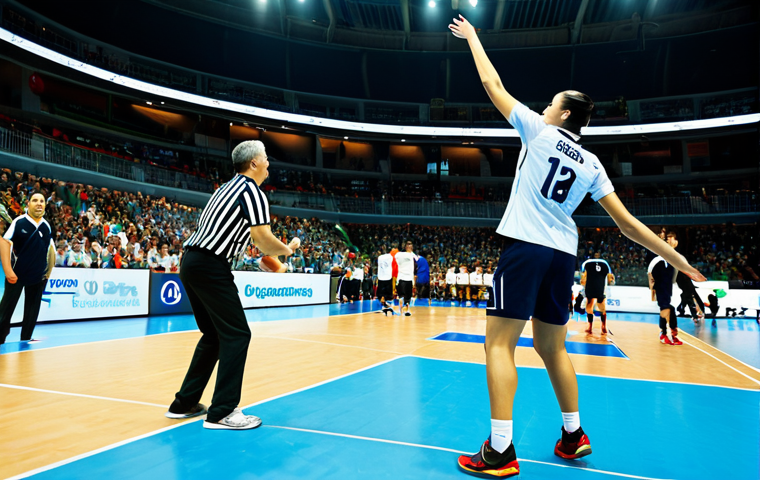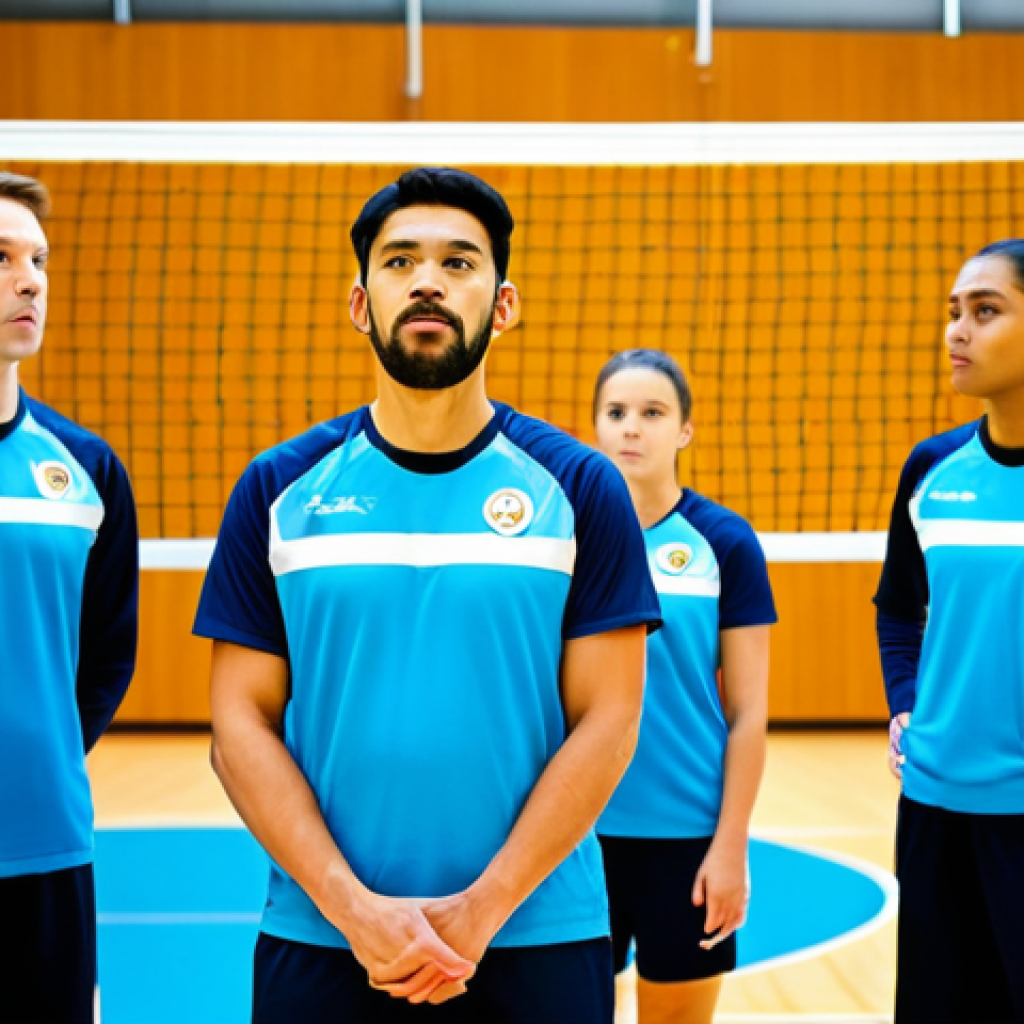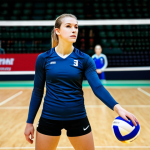You might think volleyball is just volleyball, right? A net, a ball, two teams. But after years of following the sport, from the electrifying collegiate showdowns to the high-stakes professional circuits, I’ve come to realize just how vastly different these worlds truly are.
The energy, the strategic depth, even the very pace of play can feel like entirely distinct sports. What truly fascinates me is how each league cultivates its own unique identity, driven by everything from specific rule interpretations to the sheer pressure of player contracts and the evolving trends in sports science.
It’s a complex tapestry, continually reshaped by global fan engagement and innovative broadcasts. Let’s dive deeper below. Beyond the obvious jump serves and powerful spikes, the true nuances emerge when you compare, say, the raw, unadulterated passion of an NCAA championship game, where players are pouring out their hearts for school pride, to the calculated, almost clinical execution you see in a top-tier European league.
I remember watching a match in Italy where the tactical exchanges were so intricate, it felt like a chess game played at warp speed. It’s not just about money, although player salaries and team sponsorships certainly play a huge role in attracting talent and shaping league quality.
We’re also seeing a significant shift with data analytics becoming paramount, informing everything from player recruitment to in-game strategy, a trend that’s rapidly transforming how teams approach the game globally.
Future predictions point towards even greater commercialization and the rise of new competitive hubs outside traditional powerhouses, making the sport more accessible and exciting than ever.
Understanding these distinct environments isn’t just for superfans; it’s key to appreciating the global evolution of this incredible sport.
The Unseen Paths to Professionalism

When you first start watching volleyball, it’s easy to think every player follows a similar trajectory. But having witnessed countless aspiring athletes rise through the ranks, I can tell you that the journey from hopeful talent to professional powerhouse varies wildly across the globe. It’s not just about how good you are; it’s about the entire ecosystem of development, from grassroots programs to elite academies. I’ve seen kids in California playing beach volleyball all year, honing an incredibly versatile skillset, versus youngsters in Europe meticulously trained within club systems from a very young age, focusing on specialized indoor roles. This fundamental difference in early exposure profoundly shapes a player’s style and readiness for different professional environments. The sheer volume of matches, the travel intensity, and even the academic pressures can be vastly different, creating unique challenges and opportunities that mold future stars. It truly makes you appreciate the diverse backgrounds of these incredible athletes.
1. From Collegiate Dreams to International Arenas
In the United States, the collegiate system, particularly the NCAA, serves as a massive crucible for talent. I’ve spent countless hours watching these intense university rivalries, where players aren’t just competing for a paycheck, but for school pride, academic scholarships, and the chance to make it to the next level. The raw passion and undeniable energy in these games are palpable; it’s an experience like no other. Players often develop incredibly well-rounded skills because they’re expected to contribute in multiple facets of the game. However, this path also means a shorter professional window for some, as they balance rigorous academic schedules with demanding training. On the other hand, in many European or Asian countries, young talents are often scouted and integrated into professional club academies much earlier, sometimes as young as 14 or 15. This allows for a more focused and continuous professional development track, often leading to quicker specialization and exposure to high-level competition at a younger age. The intensity of training, the tactical nuances, and the sheer volume of competitive matches these junior players experience are designed to fast-track them into elite professional circuits, bypassing the academic-athletic balance prevalent in the US system.
2. Diverse Talent Pipelines: Grassroots vs. Club Systems
My personal observation has been that the pathway truly defines the player. In places like Brazil or parts of Italy, volleyball is ingrained in the national fabric from an early age, often nurtured through community clubs and regional tournaments. Kids grow up with a ball in their hands, playing with natural flair and improvisational skill. This organic development often leads to players with incredible athleticism and innate feel for the game, sometimes even before formal coaching takes over. Contrast this with the highly structured, almost industrial-like club systems in places like Poland or Russia, where players undergo rigorous, scientific training programs from a young age, focusing on technical perfection and strategic discipline. I recall watching a junior team from Poland; their precision and tactical understanding at such a young age were astonishing, almost like watching miniature professionals. Both approaches yield exceptional athletes, but their playing styles, their decision-making under pressure, and even their emotional responses on court often bear the indelible mark of their developmental origins.
The Tactical Chessboard and Pacing Variations
You might think volleyball is just about powerful hits and big blocks, but step into the world of elite professional leagues, and you’ll quickly realize it’s a high-speed game of chess. I’ve been fascinated by how tactical approaches differ so dramatically from one league to another, influencing everything from serve reception patterns to offensive sets. What feels like a full-throttle, high-jumping extravaganza in one country might be a calculated, patient build-up in another. I personally find the tactical intricacies captivating; it’s like watching master strategists at work, adjusting on the fly. The subtle shifts in defensive formations, the cat-and-mouse game between setters and blockers, it’s all part of a larger strategic narrative that defines each league’s unique identity. This isn’t just about winning points; it’s about outsmarting your opponent, often with moves that only the most dedicated fans truly appreciate.
1. The European Emphasis on Positional Play and System Mastery
Having followed European leagues, especially the Italian SuperLega and the Polish PlusLiga, I’ve noticed a profound emphasis on system mastery and positional play. Teams meticulously plan every rotation, every transition, and every defensive read. It’s less about individual heroics and more about seamless team cohesion. I remember a specific match where a team executed a perfectly synchronized triple block, almost as if they were moving as one entity, completely shutting down a star opposite. This level of coordination comes from relentless training on precise offensive systems and highly organized defensive schemes. The pace of play often reflects this; while still incredibly athletic, there’s a certain calculated patience, waiting for the perfect opening rather than forcing a low-percentage attack. Coaches are like grandmasters, moving their pieces with intent and foresight, prioritizing consistent execution over flashy, but risky, plays. It’s a joy to watch if you appreciate the strategic side of the game.
2. Asian Leagues: Speed, Defense, and Relentless Scrambles
My experience watching Asian leagues, particularly in Japan and South Korea, has shown me a different kind of tactical brilliance. Here, the emphasis shifts significantly towards relentless defense, incredible quickness, and a never-say-die attitude in scrambles. Liberos in these leagues are often the unsung heroes, digging balls that seem impossible to retrieve, keeping rallies alive with sheer willpower. The offensive systems often prioritize incredibly fast tempo sets, catching blockers off guard, and relying on agile attackers who can hit from various positions. I recall a match where a Japanese team, despite being physically smaller, completely outmaneuvered their opponents with a flurry of quick attacks and an almost superhuman defensive effort. It felt like watching a whirlwind of motion, points coming from extended, improbable rallies. This style often leads to longer, more exhilarating rallies that keep fans on the edge of their seats, embodying a spirit of resilience and unyielding effort that is truly inspiring.
The Financial Engines and Commercial Landscape
Let’s be honest, sports at the professional level are big business, and volleyball is no exception. The financial underpinnings of different leagues dramatically shape their competitiveness, the quality of talent they can attract, and their overall sustainability. From multi-million dollar player contracts to intricate sponsorship deals and broadcast rights, the money flowing through a league dictates so much more than just salaries. It influences training facilities, travel arrangements, medical support, and even the marketing efforts to draw in new fans. I’ve seen firsthand how a well-funded league can attract top-tier global talent, elevating the entire level of play and making every match a must-watch event. Conversely, leagues with less financial muscle often rely more on homegrown talent and clever tactical innovations to stay competitive. It’s a constant balancing act between sporting ambition and economic reality, and understanding this balance helps you appreciate why certain leagues dominate the headlines while others fly under the radar.
1. Player Valuations and Salary Structures
The paychecks players take home vary massively, and it’s not just about performance; it’s about the economic power of the league they play in. Major European leagues, with their strong club traditions and robust sponsorship markets, can offer salaries that attract the best players from around the globe. I’ve heard stories of top-tier players commanding figures that rival those in other popular sports, making a career in professional volleyball truly lucrative. These leagues often operate within well-established financial ecosystems, with significant investment from private companies, regional governments, and a loyal fan base willing to pay for tickets and merchandise. In contrast, emerging leagues or those in countries with smaller sports markets might have more modest financial structures, impacting player retention and the ability to sign international stars. It’s a key factor in how talent is distributed globally, influencing which leagues become powerhouses and which remain developmental hubs.
2. Sponsorships, Broadcast Deals, and League Sustainability
The lifeblood of any professional sports league is its commercial appeal. Sponsorship deals, particularly with major global brands, inject vital capital, allowing teams to invest in infrastructure, coaching, and player welfare. Broadcast rights, especially with streaming platforms, are increasingly important, bringing the game to millions of fans worldwide and opening up new revenue streams. I’ve noticed how some leagues have been incredibly innovative in leveraging digital media, creating engaging content that transcends traditional match broadcasts, thus attracting younger audiences and diverse advertisers. This commercial savvy directly impacts a league’s long-term sustainability and its ability to grow. Without strong financial backing and smart commercial strategies, even a league with passionate fans might struggle to maintain its top talent or expand its reach.
| Aspect | Major European Leagues (e.g., Italy, Poland) | Asian Leagues (e.g., Japan, South Korea) | North American Collegiate (NCAA) |
|---|---|---|---|
| Primary Funding | Club sponsorships, broadcast rights, ticket sales, government support | Corporate sponsorships, company teams, league investments | University athletic departments, student fees, donations, ticket sales, TV rights |
| Player Compensation | High salaries for top international/national players; professional contracts | Competitive salaries, often with corporate benefits and job security | Scholarships (tuition, room, board); NIL deals gaining importance |
| Development Focus | Early club academy specialization, professional pathways | Corporate team integration, national team programs, emphasis on precision | Holistic athlete development (academics + athletics), broad skill development |
| Commercial Reach | Strong regional fan bases, established TV markets, global player draw | Domestic popularity, strong corporate ties, growing international streaming | Domestic popularity, strong alumni networks, niche but passionate fan base |
| Game Pace/Style | Strategic, disciplined, emphasis on system play, powerful attacks | Fast, high-defense, quick tempo sets, relentless scrambles | High-energy, athletic, focus on individual performance and power, evolving tactics |
The Symphony of Fan Engagement and Arena Energy
There’s something truly magical about stepping into a volleyball arena on game day. The roar of the crowd, the thumping music, the sheer excitement vibrating through the air—it’s an experience that’s deeply shaped by the local fan culture. I’ve been to matches where the crowd was so boisterous, it felt like the floor was shaking, and others where the atmosphere was more subdued but equally intense, with fans meticulously analyzing every play. The way fans engage with the sport, the traditions they uphold, and the rituals they observe before, during, and after a match, all contribute to the unique identity of each league. It’s not just about watching the game; it’s about being part of a collective experience, a shared passion that transcends mere athleticism. This communal energy is, for me, one of the most compelling aspects of following volleyball globally.
1. European Ultras and Chants: A Football-Like Atmosphere
In many parts of Europe, particularly Italy, Poland, and Turkey, volleyball matches can feel like football games in terms of fan intensity. The “ultras” groups, with their organized chants, drum sections, and elaborate banners, create an absolutely electrifying atmosphere that pushes teams to their limits. I remember being in a Polish arena where the synchronized clapping and roaring during a crucial point literally gave me goosebumps. These fans aren’t just spectators; they’re an active part of the game, influencing momentum with their relentless support or daunting disapproval. They follow their teams passionately, traveling to away games, and celebrating victories with unbridled joy. This deep-rooted, almost tribal connection between fans and clubs creates an inimitable energy that defines the viewing experience and makes every rally feel like a battle fought on multiple fronts.
2. Japanese & Korean Cheer Culture: Organized Enthusiasm
Contrast that with the highly organized and often synchronized cheer culture I’ve witnessed in Japan and South Korea. Here, fan engagement is typically more structured, with dedicated cheerleaders leading choreographed routines and chants. It’s a vibrant, colorful spectacle of coordinated support, where every fan seems to know exactly when to clap, when to shout, and what specific cheer belongs to which player. I was captivated by how the entire arena would erupt in a unified cheer after a successful spike, creating a wave of positive energy. While perhaps less spontaneously raucous than European crowds, the collective spirit and unwavering positive reinforcement from these fans are incredibly powerful. They create an uplifting, almost celebratory atmosphere that highlights the joy and athleticism of the sport, fostering a sense of collective pride in their teams and players.
The Grueling Grind: Physical Demands and Player Longevity
Volleyball players are incredible athletes, no doubt. But the physical toll of competing at an elite level varies significantly depending on the league and its schedule. I’ve always been amazed by the sheer resilience of these individuals, but I’ve also come to realize how different leagues manage player welfare, injury prevention, and recovery. From intense training regimens designed for peak performance to the demanding travel schedules that can wear a body down, every league presents its own set of physical challenges. I recall seeing players in some leagues looking visibly fatigued towards the end of a long season, highlighting the immense strain they endure. The difference isn’t just about how hard they play, but how well the system supports their long-term health and career sustainability, affecting everything from injury rates to overall career length.
1. The Relentless European Schedule and Injury Management
European top-tier leagues, with their dense domestic schedules, cup competitions, and overlapping CEV Champions League commitments, place immense physical demands on players. I’ve observed firsthand how a team might play two or three high-intensity matches within a single week, often involving significant travel. This relentless pace means players are constantly pushing their bodies to the limit, increasing the risk of overuse injuries. Clubs often invest heavily in state-of-the-art sports science, physical therapy, and recovery protocols to keep their athletes in prime condition. However, despite these efforts, the sheer volume of games inevitably leads to more wear and tear, and I’ve seen many promising careers cut short or hampered by recurring injuries. It’s a testament to their dedication that players manage to maintain such a high level of performance under such strenuous conditions.
2. Collegiate Athlete Resilience and Post-Season Challenges
The NCAA schedule, while perhaps shorter in duration than some professional leagues, is incredibly intense and often involves a unique blend of physical and mental pressures. Collegiate athletes balance rigorous training, competitive matches, and academic commitments, which can be a significant drain on their physical and mental reserves. I’ve always admired their ability to perform at such a high level while managing a full course load. The post-season, particularly the NCAA tournament, is a brutal gauntlet of high-stakes, single-elimination matches where every point matters. The physical and emotional exhaustion after such a run can be immense, and preparing for this peak performance often requires a very specific training cycle. While professional leagues have off-seasons for recovery, collegiate players often transition directly into summer training or academic responsibilities, making comprehensive rest a more significant challenge.
The Global Tapestry of Talent: International Movement and Style Blending
One of the most fascinating aspects of modern volleyball is the incredible fluidity of player movement across borders. What was once largely a localized sport has become a true global spectacle, with athletes from every continent converging in the world’s top leagues. This international exchange of talent isn’t just about individual players seeking better opportunities; it fundamentally reshapes the playing styles and tactical approaches within leagues. I’ve personally seen how the arrival of a Brazilian setter can inject a certain flair and unpredictability into a European team, or how a European blocker can bring a new level of defensive discipline to an Asian squad. It’s a beautiful melting pot of cultures and techniques, constantly evolving and enriching the sport as a whole. This cross-pollination of skills and philosophies creates dynamic, unpredictable matches that keep fans engaged and elevate the standard of play everywhere.
1. The Export of Brazilian Flair and Polish Power
Brazil has long been a powerhouse in volleyball, known for its incredible athleticism, improvisational skill, and aggressive attacking. I’ve noticed how Brazilian players, whether setters, outside hitters, or opposites, bring a unique blend of creativity and raw power to whichever league they join. Their ability to make seemingly impossible plays and their never-say-die attitude are infectious. Similarly, Polish players are highly sought after for their formidable blocking prowess and powerful attacks, often embodying a very systematic and disciplined approach to the game. When these different styles clash or blend within a single team, the results can be spectacular, leading to innovative plays and unpredictable offensive schemes that keep opponents guessing. It’s a joy to watch these different national volleyball “philosophies” interact and combine on the court, pushing the boundaries of what’s possible in the sport.
2. Asian Precision Meets European Force: A Strategic Synergy
The integration of Asian players, renowned for their exceptional defensive skills, lightning-quick movements, and precise ball control, into European leagues has created a compelling strategic synergy. I’ve seen European teams, traditionally focused on power and blocking, dramatically improve their floor defense and rally extension capabilities with the addition of a skilled Asian libero or quick attacker. This blend results in longer, more exciting rallies and a more well-rounded team performance. Conversely, European power hitters joining Asian leagues often bring a new dimension of offensive aggression and blocking presence, forcing local players to adapt and elevate their own game. This constant cross-pollination of talent and tactical ideas ensures that volleyball remains a dynamic, evolving sport, with new strategies and playing styles constantly emerging from the interaction of diverse skill sets.
Concluding Thoughts
Exploring the world of professional volleyball truly reveals a sport far richer and more complex than meets the eye. It’s a vibrant tapestry woven from diverse developmental paths, unique tactical philosophies, varied economic models, and passionate fan cultures. From the raw energy of European arenas to the disciplined precision of Asian courts, every league adds its own distinct color and texture. What I hope you take away is an even deeper appreciation for the global spectacle that volleyball has become, driven by incredible athletes and the unique ecosystems that nurture them across continents. It’s a journey of continuous discovery, and honestly, that’s what makes it so endlessly captivating.
Handy Insights for Volleyball Enthusiasts
1. Explore Global Leagues: Don’t limit yourself to one league. Services like VBTV (Volleyball World TV) offer access to a vast array of international matches, letting you experience diverse playing styles and fan cultures firsthand.
2. Follow Key Players: Many top international players move between leagues. Keeping track of their careers can provide fascinating insights into how different team dynamics and tactical systems shape their performance.
3. Understand Positional Nuances: While basic roles are universal, the specific demands and tactical importance of positions (e.g., libero, opposite) can vary subtly between leagues, influencing game flow.
4. Appreciate Developmental Paths: Remember that a player’s early training environment (collegiate vs. club academy) profoundly impacts their skill set and professional trajectory, offering unique strengths.
5. Look Beyond the Score: Beyond the final score, pay attention to the strategic chess match unfolding on court. How teams adapt defensively, or how setters distribute the ball, reveals deeper tactical brilliance.
Key Takeaways
Professional volleyball is a globally diverse sport, shaped by distinct developmental pathways, unique tactical approaches, varied financial structures, and passionate fan engagement across continents. The physical demands on athletes, coupled with the fluidity of international player movement, continuously evolve the game, making each league a unique microcosm of the sport’s global appeal and dynamic evolution.
Frequently Asked Questions (FAQ) 📖
Q: What’s the most striking difference for a fan watching collegiate volleyball versus a top-tier professional league?
A: Oh, that’s easy – it’s the energy and the stakes. When I watch an NCAA championship game, especially if it’s a big rivalry, there’s this raw, almost tangible passion that just electrifies the arena.
These young athletes are pouring out their hearts for school pride, for a legacy, and you can just feel that pure, unadulterated emotion. I remember being at a regional final once, and the crowd was so deafening, every point felt like the entire universe was riding on it.
Then you switch to, say, a match in the Italian SuperLega or the Polish PlusLiga, and while the intensity is still through the roof, it’s a different beast.
It’s less about the spontaneous, almost chaotic bursts of youthful exuberance and more about a calculated, almost clinical execution of strategy. It’s like watching a chess game played at warp speed, where every move is precise, every play is meticulously designed.
Both are absolutely thrilling, but they hit you in completely different ways, you know?
Q: How do player contracts, sponsorships, and the increasing use of data analytics really change the game for professional teams?
A: They’re absolutely transformative, I’ve seen it firsthand! It’s not just about bigger paychecks drawing in top talent, although that’s a huge part of it – money brings in the best of the best, attracting stars from around the globe to the highest-paying leagues.
But beyond just the raw financial muscle, it’s the sophistication that these resources enable. Think about it: massive sponsorships mean teams can invest in state-of-the-art training facilities, the absolute top coaching staffs, and critically, cutting-edge data analytics.
I’ve heard coaches talk about how every single touch, every jump, every serve is now being meticulously tracked and analyzed. It’s not just “gut feeling” or traditional scouting anymore.
Teams are using this data to identify hidden gems for recruitment, to refine player techniques down to the millisecond, and even to predict opponent tendencies mid-game with eerie accuracy.
It means the game is becoming incredibly strategic and precise; it’s less about raw power and more about smart, data-driven decisions on the court. It truly separates the elite leagues from the rest, giving them an almost unfair advantage.
Q: What do you think the future holds for professional volleyball globally, especially regarding new competitive hubs?
A: From my vantage point, the future of professional volleyball is incredibly dynamic and frankly, really exciting! I’m seeing two major trends that are reshaping the landscape.
First, there’s an undeniable push towards even greater commercialization – think more elaborate global tournaments, even bigger broadcast deals, and innovative fan engagement tech like VR experiences.
It’s all about bringing the sport to a wider, more diverse audience, moving beyond its traditional strongholds. And second, what genuinely excites me is the rise of new competitive hubs.
For so long, we’ve had our traditional powerhouses like Italy, Poland, Russia, and Brazil, which are still incredible, of course. But now, you’re seeing incredible growth and investment in places like Japan, Turkey, and even emerging leagues in parts of Asia and North America.
This expansion isn’t just about new markets; it means more opportunities for players worldwide, more diverse styles of play influencing the game, and ultimately, a more globalized, dynamic, and accessible sport for fans everywhere.
It’s not just a few dominant leagues anymore; it’s becoming a truly global spectacle, and honestly, it’s about time this incredible sport gets the worldwide recognition it deserves.
📚 References
Wikipedia Encyclopedia
구글 검색 결과
구글 검색 결과
구글 검색 결과
구글 검색 결과
구글 검색 결과





